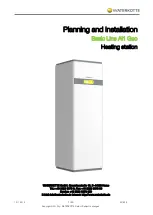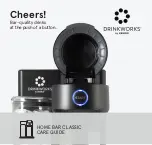
• The stand-up lifts are useful and effective when a patient has a certain degree of
dependence coupled with a caregiver need for basic care.
• They are designed for patients whose mobility is reduced but who can however be
supported temporarily on at least one leg (a minimum of tonicity by the patient is
required), and who require mechanical assistance to be put into standing and be
moved.
• The stand-up lifts contribute to the stimulation of the patient and its mobility; stimu-
late the cardiac system; combating against osteoporosis and all disorders associated
with immobility such as falls during transfers; stimulate brain activity thus favouring
maintenance of continence; improves intestinal activity and bladder function.
• Using a stand-up lift requires a capacity assessment of the patient.
• When using a stand-up lift, patients can be categorized in 2 categories:
1. Low-tonicity patients
2. Medium-tonicity patients
• How to properly use a stand-up lift (1.):
- Low-tonicity patients shall be transferred in a “semi-seated” position
Instructions for Use
Your stand is designed to lift people, so do not use it for other purposes.
• Check that the patient’s weight does not exceed the maximum weight that the lifter
can lift.
• Do not force the controls and devices of the stand, they are all easy to use and do not
need force.
• Maneuver the stander by pushing the handles or handles, never pushing the patient.
• Carefully manipulate the stander when transferring a patient and at a speed appro-
priate to the situation.
• Move with the stand on flat, smooth surfaces. It is not recommended to use it on a
slope of more than 5 °: if you are obliged to circulate on a ramp, it is advised that a
second person helps you. Never use an electric stander under a shower.
• Never charge a stand-up battery near a bath or shower.
Instructions for Use
Example with a Wayup 5 with
Mechanical opening legs
5
User Manual - Stand-Up Lift: WAYUP 5 Range
Manufactured by NAUSICAA Médical S.A.S. / Approved by Ghizlane Labrosse (Biomedical Engineer)








































